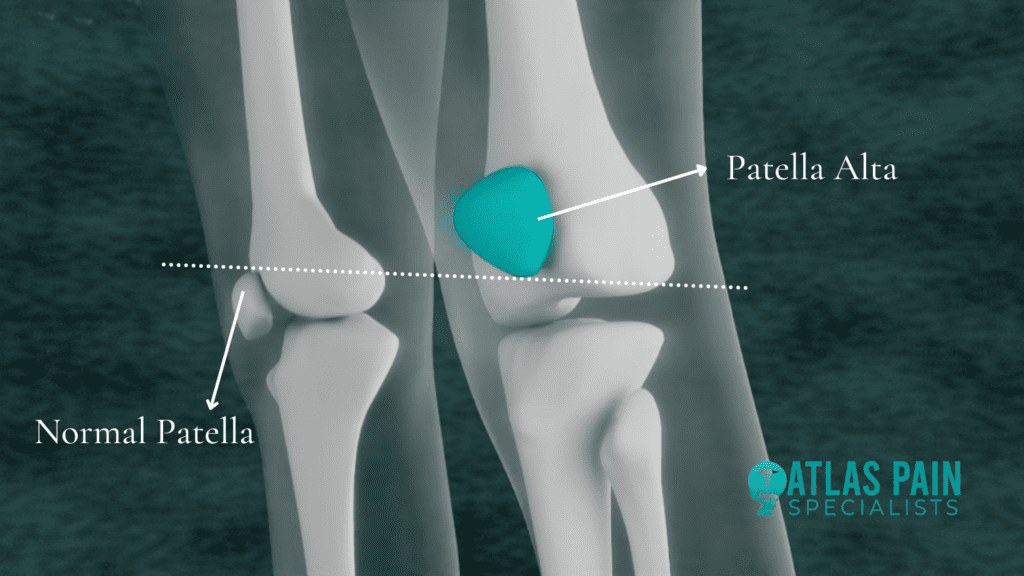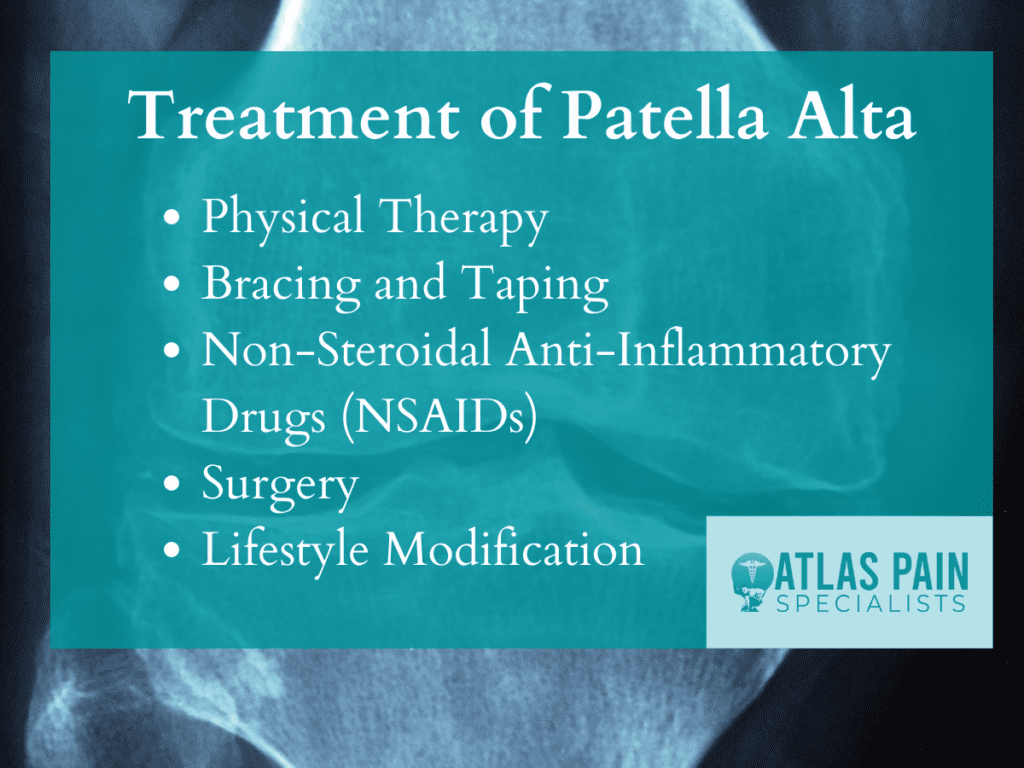

Possible Causes And Treatment Of Patella Alta
You may be wondering , what are some causes and treatment of patella alta? Patella alta, also known as 'high-riding patella,' is a knee condition characterized by an abnormally high position of the patella or kneecap in relation to the femur, the thigh bone. This condition may lead to discomfort, knee pain, instability, and an increased risk of patellar dislocation or patellar subluxation.

A full understanding of patella alta requires a look at its potential causes, symptoms, diagnosis methods, and treatment options. Read this guide to learn more.
Table of Contents
Possible Causes of Patella Alta
Patella alta is a condition that can result from various causes, both genetic and acquired. Here are some possible causes of this condition:
- Genetic Predisposition: Patella alta can be congenital, meaning a person is born with it. In these cases, the individual's patellar tendon, which anchors the kneecap to the shinbone, is naturally longer than average, causing the kneecap to sit higher than usual.
- Growth Abnormalities: In children and adolescents, damage to the growth plate can cause the patellar tendon to grow longer than the femur, leading to patella alta. This is often associated with conditions that affect growth plates, such as Osgood-Schlatter disease and Sinding-Larsen-Johansson syndrome.
- Trauma or Injury: Any form of trauma to the knee that results in inflammation or damage can potentially lead to patella alta. This could include sports injuries, accidents, or falls that affect the knee region.
- Surgical Complications: Patella alta can also be an unintended consequence of knee surgeries. In particular, surgeries involving the patellar tendon, such as anterior cruciate ligament (ACL) reconstruction, may inadvertently lead to an elongation of the tendon, causing the kneecap to ride higher than normal.
- Chronic Conditions: Certain chronic conditions, including patellar tendinitis or jumper's knee, can cause the patellar tendon to elongate over time. This progressive elongation can eventually lead to patella alta.
- Certain Medical Procedures: Some medical procedures, such as casting or bracing of the knee for extended periods, may lead to a temporary or even permanent elongation of the patellar tendon, which could result in patella alta.

In some cases, the exact cause of patella alta may remain unknown. It's also possible for multiple factors to contribute to the development of this condition.
Diagnosing Patella Alta
Diagnosing patella alta involves assessing the patient's medical history, conducting a physical examination, and using diagnostic imaging. The healthcare provider collects information about previous knee injuries, surgeries, and existing conditions while noting symptoms such as knee pain, instability, or recurring patellar dislocation.
During the physical examination, the doctor evaluates the range of motion and stability and performs specific tests to assess the position and movement of the patella. Measurement ratios and indices like the Insall-Salvati ratio, the Caton-Deschamps index, and the Blackburne-Peel ratio are commonly employed to evaluate the patella position.
These measurements are obtained through X-ray imaging or specialized radiographic views of the knee. X-rays, MRI, or CT scans provide detailed images of the knee joint, enabling visualization of patellar alignment and any associated abnormalities. Dynamic imaging techniques such as fluoroscopy or specialized MRI sequences may assess patellar tracking during knee movements.
Following the diagnosis of the patella alta, the healthcare provider develops an appropriate treatment plan based on severity and individual needs. Accurate diagnosis is vital for effective treatment, so it is advised to consult a qualified healthcare professional for a thorough evaluation and personalized guidance toward suitable management options.
Treatment of Patella Alta
The treatment of patella alta typically depends on the severity of the symptoms and the degree of the patella's displacement. Here are the possible treatment options:

Physical Therapy
This is often the first line of treatment for patella alta, particularly for mild cases. Therapy exercises aim to strengthen the quadriceps muscle, which helps stabilize the kneecap and improves the flexibility and strength of the knee joint.
Bracing and Taping
Sometimes, a doctor might recommend wearing a knee or patellar stabilizing brace. These devices help hold the kneecap in a more normal position, which can help reduce discomfort and improve stability. Kinesiology taping techniques might also be used to offer support to the patella.
Non-Steroidal Anti-Inflammatory Drugs (NSAIDs)
Medications can manage pain and inflammation associated with patella alta. This is typically an adjunct to other treatment modalities, such as physical therapy.
Surgery
For severe cases of patella alta, especially when conservative treatments have failed, surgery might be considered. The goal of surgery is to lower the position of the kneecap by shortening the patellar tendon. Surgical techniques include tibial tubercle osteotomy, where a section of bone where the patellar tendon attaches is moved downwards, and patellar tendon grafting, which involves using a graft to shorten the tendon artificially.
Weight Management
If the patient is overweight, weight loss can help by reducing pressure on the knees and alleviating the symptoms of patella alta.
Lifestyle Modification
Avoiding activities that strain the knee or incorporating exercises that strengthen the muscles around the knee can help manage the symptoms and prevent the worsening of the condition.
The treatment choice should be based on the individual's specific symptoms, the extent of the patella alta, and the person's overall health and lifestyle. Regular follow-ups with a healthcare provider are essential to monitor progress and adjust the treatment plan.
Please note that this information is a general guide, and one should always consult with a healthcare provider for the most appropriate treatment plan for their specific condition.
Conclusion
Patella alta is a condition that requires proper medical attention, as it can potentially lead to more severe knee problems if left untreated. If you suspect that you or someone you know may have this condition, it is recommended to seek medical advice promptly. As with many health conditions, early diagnosis and treatment of patella alta can lead to more positive outcomes.
About Dr. Sean Ormond



